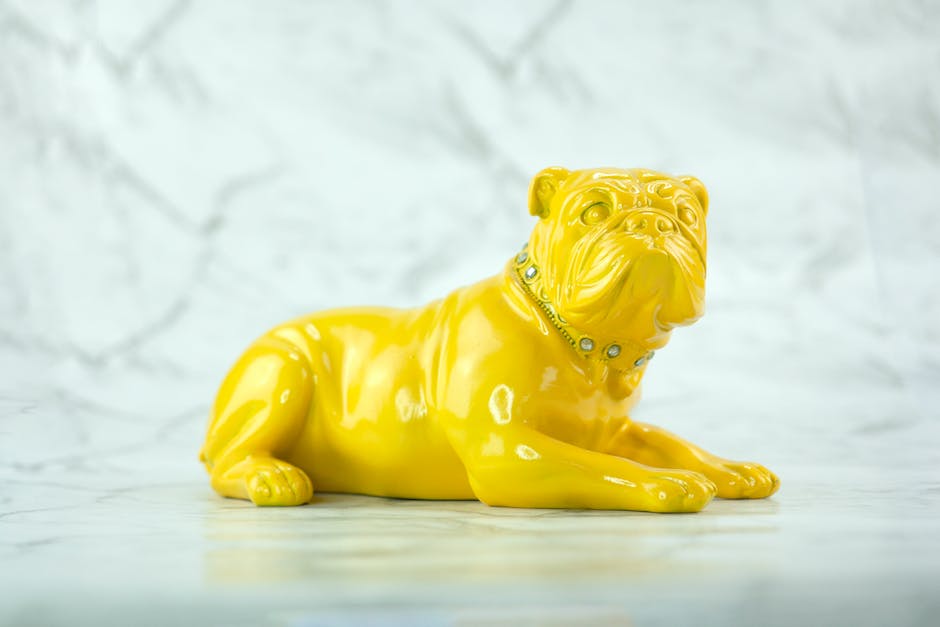There are many potential reasons why a dog might throw up yellow, including an infection, liver disease, gastrointestinal problems, or even just eating something they shouldn’t have. If your dog is throwing up yellow and also seems to be in pain, is lethargic, or has a fever, it’s important to take them to the vet right away in case they have a serious condition. If your dog seems otherwise healthy, you may want to try withholding food for 12-24 hours and see if that helps settle their stomach.
There are a few reasons why your dog might be throwing up yellow liquid. One possibility is that they are suffering from liver disease, which can cause the dog’s bodily fluids to turn yellow. Another possibility is that they have a blockage in their digestive system that is preventing proper nutrition absorption, causing the dog to vomit up a yellow liquid that resembles bile. If your dog is displaying other symptoms such as lethargy, appetite loss, or yellowing of the eyes or gums, you should take them to the vet as soon as possible.
Should I be worried if my dog throws up yellow?
If your dog is throwing up yellow bile frequently or has other symptoms such as diarrhea, lethargy, or loss of appetite, it may be a sign of a more serious issue. Talk to your vet to get help figuring out what’s going on and to get your dog feeling better.
Dogs may vomit yellow foam due to an empty stomach or digestive irritation. The yellow foam is a form of bile, which is produced in the liver, stored in the gallbladder, and released into the small intestine. If your dog is vomiting yellow foam, it is best to consult with a veterinarian to determine the cause and treatment.
What can I give my dog for yellow vomiting
If your dog is throwing up bile, there are a few things you can do to help. First, try feeding them bland, easy-to-digest food little and often. This includes a specially formulated sensitivity diet, or, in an emergency, cooked chicken, white fish, and white rice. If your dog is otherwise bright and has only been sick once or twice, this should help them to start feeling better. If your dog is still vomiting after a day or two, or if they seem to be in pain, please take them to the vet for further treatment.
If your dog vomits blood or black/dark brown vomit, it may be a sign of a potentially serious condition. Contact your vet immediately for further advice. If your dog appears unwell or is in pain, also contact your vet immediately.
Is dog vomiting bile serious?
If your dog is throwing up bile, it’s important to take them to the vet as soon as possible. Gastrointestinal conditions can be very serious, and early diagnosis and treatment is critical.
Canine parvovirus is a virus that can cause vomiting and diarrhea in puppies. If your puppy is vomiting or has diarrhea, it is important to take them to the vet to be checked for this virus.
How do you settle a dog’s stomach after vomiting?
Chicken and rice are prime ingredients in many dog foods, and these mild foods sit well on upset canine stomachs. Shredded chicken is easy on upset stomachs and acts as a huge eating incentive for dogs with decreased appetites. Pumpkin bone broth baby food is also easy on upset stomachs and is a healthy and nutritious option for dogs.
If you see white foam in your vomit, it could be a sign of indigestion, a build up of stomach acid, or acid reflux. However, it could also be an indicator of a more serious condition like pancreatitis. If you’re concerned, it’s best to speak with a doctor to get a proper diagnosis.
Should I feed my dog after vomiting yellow bile
If your dog is throwing up yellow foam or bile, it is likely because he has an empty stomach. A lack of food can cause bile to build up and irritate your dog’s stomach lining, so it is a good idea to feed your dog after you see him vomiting yellow.
If your dog vomiting just once, it’s best to withhold food for at least six hours. They should have access to water, but keep their intake low to avoid making them worse. If the vomiting subsides, you can start to reintroduce small, bland meals gradually.
What does unhealthy dog vomit look like?
If your dog’s vomit is any color other than clear, it’s a good idea to contact your veterinarian. Different colors can indicate different underlying problems, and it’s always best to err on the side of caution.
If your dog is vomiting multiple times in one day or for more than one day in a row, it is important to seek prompt attention from a veterinarian. In addition, if your dog is showing any of the following symptoms along with vomiting, you should also seek veterinary care: loss of appetite, change in frequency of urination.
What are the first signs of parvo
Parvovirus is a serious disease that can cause severe symptoms in dogs. Some of the most common signs of parvovirus include lethargy, loss of appetite, abdominal pain and bloating, fever or low body temperature (hypothermia), vomiting, and severe, often bloody, diarrhea.
If your dog is showing any of these symptoms, it is important to seek veterinary care as soon as possible. Persistent vomiting and diarrhea can cause rapid dehydration, and damage to the intestines and immune system can cause septic shock. With prompt treatment, most dogs recover from parvovirus, but the disease can be fatal in some cases.
A bland diet for a dog’s upset stomach is usually rice and chicken. This diet removes the irritating substances from food to help your dog’s digestive system rebalance itself.
What human medicine can I give my dog for vomiting?
Bismuth subsalicylate can be given to your dog for digestive upset. The recommended dosage is 1/4 teaspoon per 10 pounds of body weight. Be sure to talk to your veterinarian before giving any medications to your pet.
If you notice your dog has diarrhea, it is best to reach out to your veterinarian for professional help and advice. Diarrhea can lead to dehydration so it is crucial to get guidance on how to care for your dog.
How long after dog throws up bile can they eat
If your dog has been vomiting, it’s important to withhold food for 12 to 24 hours. Once your dog has not vomited for at least 6 hours, you can offer a small meal. A bland, easily digestible food such as cooked white rice mixed with boiled white meat chicken (no bones or skin) is ideal, but you can also use a small portion of your dog’s regular diet.
BVS is a condition that can be resolved by simply feeding your dog. However, if your dog has been without food for a while, they may need to be rehydrated with IV fluids first. If your dog is showing signs of BVS, please take them to the vet right away.
What are the signs of pancreatitis in dogs
Pancreatitis is a condition where the pancreas becomes inflamed. The most common clinical signs include nausea, vomiting, fever, lethargy, abdominal pain, diarrhea, and decreased appetite. During an attack, dogs may take a ‘praying position’, with their rear end up in the air and their front legs and head lowered onto the floor.
If your dog begins vomiting, it is important to first rule out any potential underlying health conditions. Dietary indiscretion, or scavenging, is the most common cause of vomiting in dogs. A sudden change in diet or a potential food intolerance or allergy can also cause vomiting. Intestinal parasites, such as worms, can also be a cause of vomiting in dogs. If your dog is vomiting, it is important to consult with your veterinarian to determine the cause and to develop a treatment plan.
Should you take your dog to the vet if they throw up
If your dog is vomiting or has diarrhea, it is important to keep an eye on them and seek medical help if needed. If they vomit three or more times in a period of eight hours, this is a cause for concern. If there is any blood in either vomit or diarrhea, you should take your dog to the vet immediately.
Parvovirus is a severe and highly contagious virus that infects dogs of all ages, but is most commonly seen in puppies. The most common symptoms of parvovirus are diarrhea, lethargy, anorexia, fever, vomiting, depression, and dehydration. If left untreated, parvovirus can lead to septic shock and death. If you suspect that your dog may be infected with parvovirus, it is important to seek veterinary care immediately. Early diagnosis and treatment is essential for the best possible outcome.
What age do most dogs get parvo
There are a few things to know about myocarditis in puppies. First, the disease most often strikes in pups between six and 20 weeks old. However, older animals can sometimes be affected as well. Second, a rare variant of the disease may be seen in very young (neonatal) puppies. This is called myocarditis (an inflammation of the heart muscle). Finally, if your puppy shows any signs of myocarditis, it is important to seek veterinary care immediately.
Parvovirus B19 is a virus that commonly affects children and young adults in the United States. The virus is most active in late winter, spring, and early summer, with mini-outbreaks occurring every 3-4 years. Since parvovirus B19 only affects humans, it cannot be contracted from dogs or cats. Symptoms of the virus include fever, rash, and joint pain. In severe cases, the virus can lead to anemia or hydrops fetalis (a condition that can be fatal to unborn babies). Treatment for the virus is typically supportive, with people being encouraged to rest and drink plenty of fluids.
How can I soothe my dogs stomach
If your dog is experiencing diarrhea, there are certain foods that can help to ease their upset stomach and firm up their stool. Plain, canned pumpkin is a great option, as is oatmeal or plain, unsweetened yogurt. You can also try feeding them some boiled, mashed sweet potato or fresh bananas.
Dear dog owner,
If your dog has recently vomited, please do not force them to play or walk. Their body will need time to recover, which is generally 1-2 days. Allow your dog to rest during this time.
Is Pepto-Bismol safe for dogs
Pepto-Bismol is an over-the-counter medication that can be used to treat gastrointestinal issues in dogs, but it’s not suitable for every dog, and chronic use is not recommended. If your dog has gastrointestinal signs and you’re considering using Pepto-Bismol, you should consult with your veterinarian first and administer the medication to your dog only under their direction.
The three anti-nausea medications mentioned in the question can be very effective in preventing vomiting in a pet that is stressed. Cerenia® is a veterinary-specific prescription medication that lasts for 24 hours with just a single dose. Dimenhydrinate (brand names: Dramamine® or Gravol®) and meclizine (brand names: Antivert® and Bonine®) are also effective in preventing vomiting and can be easily found over the counter.
Warp Up
Why is my dog throwing up yellow could be a number of reasons. Some common reasons are: • Gallbladder or Pancreatic Disease – These diseases can cause a yellowish fluid to build up in the intestine which is eventually vomited up. • Intestinal Infection – A bacterial or viral infection in the intestines can cause vomiting of a yellowish liquid. • Food Allergy or Intolerance – Some dogs may be allergic or intolerant to certain foods which can cause them to vomit up a yellow liquid. • Liver Disease – Liver disease can cause a yellowish bile to build up in the intestine which is eventually vomited up.
There are many potential reasons for why a dog might throw up yellow, including ingestion of something yellow, jaundice, or a gastrointestinal issue. If the dog is acting otherwise normal, it might just be something they ate. However, if the dog is acting lethargic or unwell in addition to throwing up yellow, then it warrants a visit to the veterinarian to rule out any serious underlying causes.






